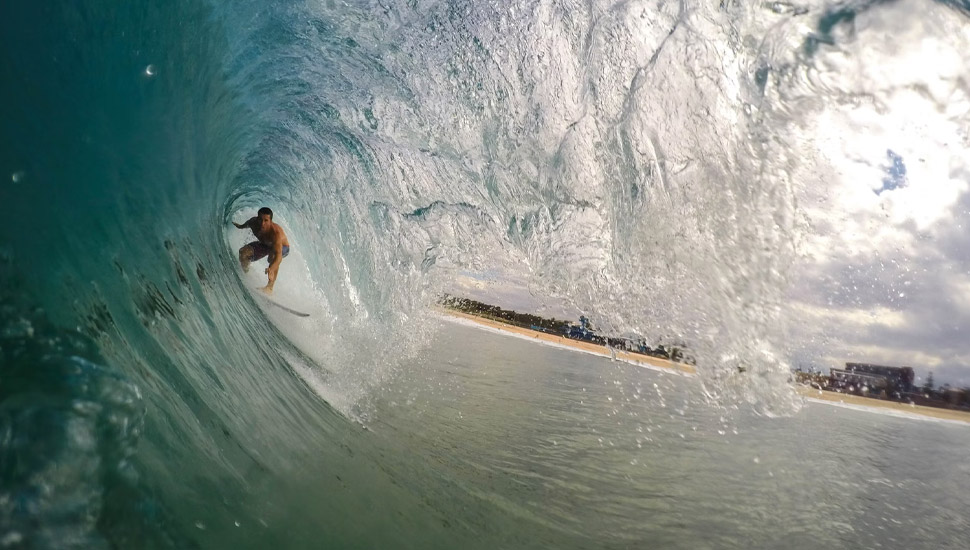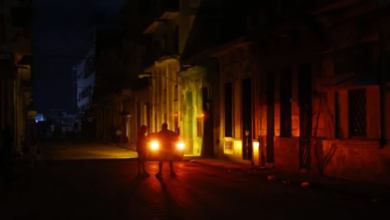Scientists and Athletes Defend Mexico’s Surf Paradise from Economic Development Damages

Punta Colorada, a surf haven in Oaxaca, Mexico, faces threats from pollution and development. Surfers, activists, and scientists are fighting to preserve its waves and ecosystem, seeking to protect this last untouched beach of Puerto Escondido. This article is adapted from Wired’s special report on Punta Colorada.
Punta Colorada, nestled in the Mexican state of Oaxaca, is not just a surf spot, but an internationally acclaimed paradise for surfers. Its waves, unique in the world, are now under threat. To safeguard the pristine condition of the water and the distinctive way the waves break, a coalition of surfers, activists, and scientists has resolved to protect the entire ecosystem of the area. Despite successfully thwarting plans to construct resort complexes on several occasions, the persistent pollution from a wastewater treatment plant continues to pose a threat to the sport, the natural environment, and the local lifestyle.
Surfers, often the first to notice changes in the marine environment, are acutely aware of the disappearance or risk of unique waves worldwide due to unplanned coastal development, pollution, and erosion. In Oaxaca, surfers have taken on the role of guardians, alerting the community to protect their coastal treasures. What began as a fight to protect a single wave in the southern Pacific region of Mexico has evolved into a battle to defend an entire ecosystem: Punta Colorada, a vital green lung and, as local surfer Roxel Pérez aptly puts it, ‘the last untouched part of Puerto Escondido.’
Puerto Escondido, home to the iconic Mexican Pipeline wave at Zicatela, has become a magnet for surfers. This coastal area, which only emerged on Mexico’s tourist map less than 50 years ago, underwent a rapid transformation during the pandemic. The influx of tourists led to gentrification, altering the landscape and pushing public services to the brink. The focus on tourists’ desires over residents’ needs has resulted in the replacement of hostels and beachside eateries with new restaurants and Airbnb accommodations.
Just seven kilometers from Puerto Escondido’s center and two kilometers from its international airport, Punta Colorada, in the municipality of San Pedro Mixtepec, is the last refuge of the region’s low deciduous forest. Its shores, kissed by perfect bodyboarding waves, have earned the name Boggielandia. However, over the past 13 years, this natural playground has become a battleground. While the state government aims to transform it into a tourist hotspot, locals strive to preserve its ecological value, including its waves, lagoon, dunes, mangroves, marine turtles, birds, bats, crocodiles, and fossil deposits.
Threats from Development and Pollution
In 2023, the state government unveiled an ambitious tourism project for 111 hectares of Punta Colorada. The project, supported by Governor Salomón Jara’s administration, included plans for a jetty, a shopping center, a residential area, an observation deck, a transit hotel, and four all-inclusive hotels in the jungle. The community responded with a collective legal action that, in early 2024, prohibited any construction in the area. However, this measure does not guarantee the area’s conservation. Punta Colorada remains threatened by a single structure: a wastewater treatment plant.
This treatment plant, burdened by sewage overflow from overwhelmed tourist areas, increases contamination due to its poor operation. This pollution jeopardizes Punta Colorada’s future. In the past, much has been done to protect this place. In 2011, surfer Chuy Silva told local Almendra Gomezleyva his greatest fear: that the state government would destroy the Colorada wave. Although surf breaks receive many waves, surfers often refer to them singularly, recognizing each with unique characteristics and names.
Chuy was worried because the government planned to dredge the La Salinita Lagoon behind the beach and build a jetty on the reef where the wave breaks. These plans evoked recent wounds in Oaxaca. That year, the village of Cerro Hermoso, an hour from Colorada, saw its beach dry up due to the installation of a breakwater. Since the late 1990s, a jetty built over the central bay has altered the sand flow, expanded Zicatela Beach, and, according to seasoned surfers, shortened the water tongue of Oaxaca’s most famous wave. They say it breaks closer to shore, making it more powerful and dangerous.
The Efforts to Protect the Wave
In 2011, Almendra and a group of young activists took a stand, creating a Facebook page called ‘No a la dársena de Punta Colorada’ to rally the local community. Their initial expectation was that only surfers would join the cause, but they were pleasantly surprised by the support from wetland defenders, oyster fishermen, turtle protectors, and scientists. Their collective protest succeeded, halting the construction and leading to a beach cleanup. This shared interest in conservation laid the foundation for Salvemos Colorada. Almendra, the group’s coordinator, fondly recalls the reactivation of the organization in 2021, when Governor Alejandro Murat announced plans to build a jetty and a harbor shelter. Once again, the community’s resilience and determination shone through as they successfully blocked the project.
The fight for Colorada has a more extended history. In the 1970s, the National Fund for Tourism Development (Fonatur) selected five beaches for development akin to Acapulco, a renowned Mexican tourist success. These beaches were Cancún, Puerto Vallarta, Ixtapa-Zihuatanejo, Los Cabos, and Puerto Escondido. Fonatur expropriated 1,309 hectares from Santa María Colotepec and San Pedro Mixtepec (comprising Puerto Escondido) and built the airport. Without expropriating Zicatela, a crucial part of the plan, Fonatur removed Puerto Escondido from its list and added Huatulco. According to the expropriation decree for Colorada, if the area weren’t developed within five years, the land would be returned to the communal owners in a trust, but this never happened. Currently, locals are fighting to reclaim their land and turn it into an ecological reserve.
A Treatment Plant in a Green Lung
In late 2023, Zapotec surfer Humberto swam for 12 hours to demand the sanitation of Puerto Escondido, the protection of Punta Colorada, and the removal of the jetty in the central bay, which he says has affected the Zicatela wave he has surfed for over 30 years. Known locally as Beto, he describes himself as a man of the sea and mountains. “I ride waves, collect flowers, and teach surfing.” His grandparents were among the first mountain explorers from Oaxaca who sought the coast for cultivation.
Months earlier, a sewage spill from a nearby pump station was in front of Humberto’s shop named Colorada, located on Zicatela’s main avenue. It started small but expanded over 100 meters in days. “I was apathetic, indifferent,” the surfer recalls. He hoped someone would address the issue, but no one did. This year, according to the Federal Commission for Protection against Health Risks (Cofepris), three sites in Puerto Escondido exceeded the World Health Organization’s permissible levels of enterococci bacteria, posing a public health threat. One day, when Beto took his young son to the beach and saw the sewage flooding the sand, he realized the situation was unjust. He filmed and shared the pollution on social media, prompting the State Water Commission to make temporary repairs. However, repeated spills occurred. “It was a stinking mess,” he says, sharing the scenes online.
According to UN data, in 2020, 44% of global domestic wastewater was discharged untreated, and only 11% of domestic and industrial wastewater was recycled. In Mexico, the trend is similar, with over 7,200 million cubic meters of wastewater generated annually but less than half treated. Increased coastal populations challenge the treatment of wastewater near fragile ecosystems.
In Puerto Escondido, poor waste management was exposed during the pandemic when tourism surged, but infrastructure did not. A wave of digital nomads and influencers joined surfers, overwhelming the town. Mexico was one of the few countries that did not close its borders during the pandemic, leading to rapid gentrification, displacing families, and raising living costs. “It wasn’t intentional, but it happened. Before, people moved here out of love for Puerto’s lifestyle, wanting to become locals. During the pandemic, people just wanted a place to work by the beach while maintaining their city life and amenities,” explains Almendra.
The Environmental Impact
Increased tourism has already caused sewage spills in Punta Colorada. Residents documented that the sandbar broke, causing sewage from the treatment plant overflowing into La Salinita Lagoon and the sea. “It looked like an oil spill,” says Beto, describing the cruel image of crocodiles crossing black pools. Salvemos Colorada has evidence that the plant’s operations contaminate the lagoon.
For a decade, Humberto has fought for Puerto Escondido’s environmental health, documenting sewage spills, landfill fires, beach waste, tourists driving over coastal dunes, and deforestation. He reported the damage, but nothing changed, causing him sleepless nights. One such night, he decided to swim for 12 hours in protest. Gathering his friends on a Wednesday morning, Humberto covered himself in zinc, applied Vaseline to his nose, and, despite feeling sick, entered the sea. He forced himself to ignore his thoughts and swim. His favorite memory from that day is the support from Puerto’s residents. Days later, they gathered enough signatures to file a lawsuit to prevent construction in Punta Colorada, coordinated by the coalition Salvemos Puerto, which includes Salvemos Colorada, Costa Unida, and SOS Puerto.
Puerto Escondido’s sewage coverage is 48%. Almendra explains that most people use septic tanks emptied by tanker trucks when complete. Near her home, a car humorously named “Oasis” services the businesses in Punta Zicatela. It’s common to hear the tankers’ pumps at night and sometimes during the day. The Colorada treatment plant, the only large structure in the jungle, receives more sewage than it can handle.
The plant’s beginnings were irregular, operating without discharge permits from the National Water Commission (CONAGUA), meaning it had yet to prove it could treat water to safe standards. In 2006, a citizen complaint led to government acknowledgment of the plant’s inadequate situation and foul odors, but the problem persisted. Years later, plant effluents exceeded permissible contaminant limits for discharges into national waters. In 2022, a CONAGUA-approved lab found that the lagoon’s discharges exceeded limits for oils, fecal coliforms, and total Kjeldahl nitrogen, among other pollutants.
The Case for Conservation and Sustainable Surfing
Wastewater adds nitrogen to the sea, causing toxic algal blooms and low-oxygen zones. A study mapping 135,000 global watersheds reported high nitrogen levels in South America and Africa, exposing 58% of coral reefs and 88% of seagrass beds to pollution.
Human health is also at risk, as wastewater containing bacteria, viruses, and parasites can cause diseases like gastroenteritis, hepatitis, cholera, and typhoid fever. Sewage can also carry industrial waste, pharmaceuticals, and pesticides. Poor sanitation exacerbates antimicrobial resistance.
Marine turtles and other species sensitive to water quality may fall ill or avoid polluted beaches. “If there are no waves, you can’t surf, but if there are waves and the water is dirty, we can’t surf either,” says oceanographer and surfer Enric Pallàs, highlighting the risk of hepatitis and E. coli, as experienced by surfers at Imperial Beach, affected by polluted waters from the Tijuana River. “These issues don’t recognize borders; an integrated ocean management is needed.”
In Colorada, a lawsuit addresses the wastewater problem, and while they won a favorable ruling in 2022, it’s under review as it doesn’t require authorities to repair the environmental damage. The problem could worsen with the new Oaxaca-Puerto Escondido highway, which brought 41,988 tourists in its first week. Due to the overflow, the government announced a 20 million peso investment for treatment plants. However, previous estimates required 200 million pesos for 100% operational capacity and another 200 million to expand infrastructure to meet Puerto’s needs.
The Salvemos Colorada group aims to preserve the beach as a natural reserve, ecological park, or Ramsar site, giving the lagoon international protection standards. They have support from Save the Waves Coalition, which develops strategies to protect ecosystems around surf breaks using each country’s legal frameworks. They focus on surf ecosystems, where physical components create surfable waves and associated social, cultural, and economic elements.
The economic value of surfing in coastal communities is hard to quantify but has been measured in “Surfonomics” studies. In 2013, Ralph Pace conducted one for Punta Colorada, estimating revenues of 7.4 billion USD from 2,000 surfers and projecting them to reach 111.1 billion USD by 2018. Salvemos Colorada plans to update this study.
Mara Arroyo of Save the Waves points out that each conservation project requires defining regulatory areas. “The sea connects to the mountains, but having such a large scope is impossible.” It’s necessary to identify how communities coexist with each surf break and recognize each site’s ecological contributions and vulnerabilities.
Save the Waves seeks to use surfing to drive conservation and financially sustain protected areas. This isn’t far-fetched, considering a 2021 study found that 92% of surfers are willing to pay more for sustainable tourism.
In Oaxaca, they aim to establish a public policy to protect all surf breaks with a network of protected surf areas. Colorada and Zicatela aren’t the only waves at risk; Punta Conejo also faces threats from a planned port over its lagoon for the Isthmus of Tehuantepec Interoceanic Corridor, potentially affecting waves and fishing, farming, and salt extraction activities. Completing the technical justifications for creating protected natural areas is pending in both locations. Legal protection for waves in Mexico could resemble the surf break laws in Peru and Chile, protecting waves from extinction.
Boggielandia: A Unique Surf Spot
Surfers share stories of lost or damaged waves worldwide. In Spain, a competition was canceled when Mundaka, one of the world’s most famous waves, vanished in 2004 due to river dredging destroying the sandbank where the wave broke. The government reversed the damage three years later, recognizing the local economy’s dependence on surfing. Mexico has its own examples, too. In northern Baja California, the Harrys wave was a well-kept secret until 2005, when a gas terminal construction by Sempra destroyed the surf break within days.
Also read: México, Honduras, Bolivia, and Brazil Call for End to U.S. Embargo on Cuba
In Colorada, the wave still roars, surfed for years by bodyboarder Roxel Pérez, but the specter of gentrification looms. In a few years, Puerto Escondido’s beaches became crowded, rents skyrocketed, and the landscape transformed, leaving behind the wild, shrub-filled place Roxel once knew, with its tales of the ocean’s power. Roxel fondly recalls Colorada’s past, “There was nothing, but you found a lot of peace.” The site remains a paradise with fewer visitors than other parts of Puerto, but its vegetation is now littered with plastic waste.
The fight to save Punta Colorada continues, a testament to the determination of those who love its waves and wildlife. This struggle represents a broader effort to balance development and conservation, ensuring that future generations can enjoy Mexico’s natural beauty and surf heritage.




